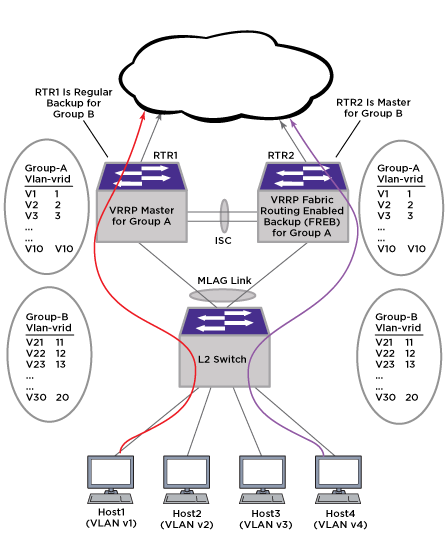VRRP Grouping Description

Example VRRP Group Configuration shows an example configuration of two different groups in simple MLAG topology. Group A is configured with 10 VRRP VRs, each VR on a separate VLAN, and using separate VRID. The same set of VRRP VLANs are grouped together on both routers. All the VRRP VLANs on Group A have the same topology with respect to Router 1 and Router 2. If a VLAN on Router 1 goes down due to link faults or I/O slot failure, other VLANs also go down (that is, all VLANs in the group share the same fate).
This is a typical topology for which this scaling is well suited. If the VLAN going down event triggers VRRP state change in one VLAN, a VRRP state change occurs on other VLANs also. This example has four hosts on different VLANs belonging to group A; traffic from hosts may get hashed to either of the MLAG links and reach either the VRRP master (RTR1) or the Fabric Routing-enabled backup router (RTR2). Both routers perform routing for host traffic. Group B has a different set of 10 VRRP VRs that were configured on a different set of VLANs and with a different set of VRIDs from that of Group A. Routers are configured for regular master-backup states (unlike Group A which has master-FREB states).

Note
If you want a regular master-backup operation on a particular group for some reason, do not reuse the VRIDs configured in other groups or other individual VRs.
